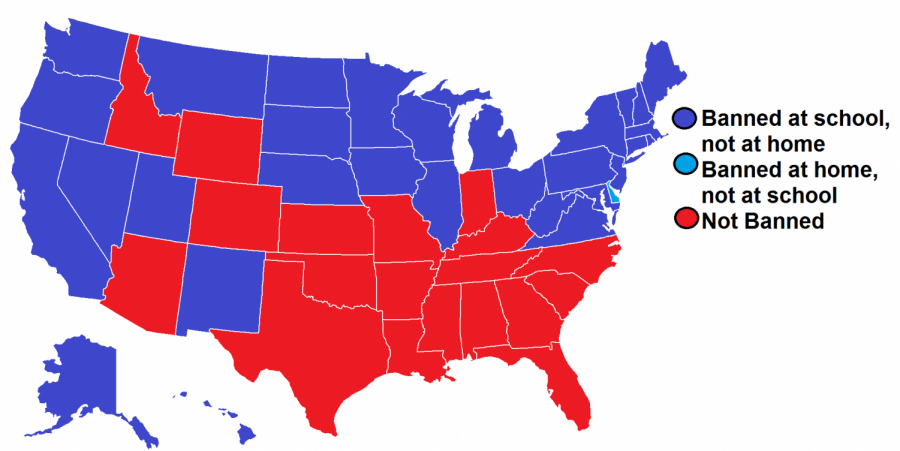States that still allow Corporal Punishment
Corporal Punishment is Getting Out of Hand
Beating children in public schools is cruel, ineffective, and outdated
In 1977, James Ingraham was beaten with a paddle at a public school, and missed the next 10 days of school due to the injuries the punishment inflicted. What had he done? He had been disruptive in the school auditorium. Nineteen states in the US still allow public schools to practice corporal punishment. In eight of those states, over 15 percent of the schools practice it, according to a study by NCBI. Typical corporal punishment involves striking a misbehaving child with a wooden board or hand. This type of punishment is allowed because of the Supreme Court Case Ingraham v. Wright, which ruled that it is up to the state or local government to decide whether or not corporal punishment can be used. Despite this ruling, corporal punishment should not be allowed in public schools.
Corporal punishment has the potential to become too severe, and end up seriously injuring the students. In Ingraham v. Wright, James Ingraham was supposed to be spanked five times with a paddle for being disruptive. However, he claimed that he didn’t do anything wrong, and was spanked 20 times instead. The bruises he suffered were so serious that he had to stay home for 10 days and receive medical help. For a minor infraction, like being disruptive, no student should have to seek medical aid and miss over a week of school. It’s almost contradictory, because why would a school want a child, especially a misbehaving one, to be absent for an extended period of time? According to the study by NCBI, a typical beating paddle is half the length of an average child. In circumstances other than corporal punishment, attacking someone with an object half their size is considered assault with a weapon. However, schools are not reprimanded, due to the context being the punishment of a misbehaving child.
Supporters of corporal punishment say that it is a quick way of punishing students that does not get in the way of their work, like detentions do. However, even though they don’t want to have students miss time in school, severe corporal punishment (like with Ingraham) actually makes them miss more school than just a detention. In addition, saving time in the discipline of students is not worth the possible physical and mental trauma corporal punishment can inflict.
This type of punishment is still allowed in 19 states, and in the 2011-2012 school year it was used 167,000 times, according to Mother.ly. As a society, we have found other, more healthy ways to help students who misbehave, and it is time to start using those methods. Corporal punishment is a cruel, outdated practice that needs to be banned at a federal government level.
Works Cited
“10 Supreme Court Cases Every Teen Should Know.” The New York Times Web Archive, archive.nytimes.com/www.nytimes.com/learning/teachers/featured_articles/20080915monday.html.
“Corporal Punishment in U.S. Public Schools: Prevalence, Disparitiesin Use, and Status in State and Federal Policy.” PubMed Central (PMC), www.ncbi.nlm.nih.gov/pmc/articles/PMC5766273/.
“In These 19 States, It’s Still Legal for School Officials to Hit Children.” Motherly, 12 June 2018, www.mother.ly/parenting/19-states-still-legal-school-officials-hit-children.
